Many cat owners have observed curious behaviors in their pets during slumber, one of which includes the phenomenon where a cat’s eyes appear to roll back as they sleep. This behavior can cause concern or curiosity, leading one to wonder whether this is normal or indicative of an underlying issue. There are several reasons why a cat might display this trait during rest, many of which are normal and harmless characteristics of their sleep patterns. Exploring these behaviors provides insight into the health and sleep hygiene of our feline companions.
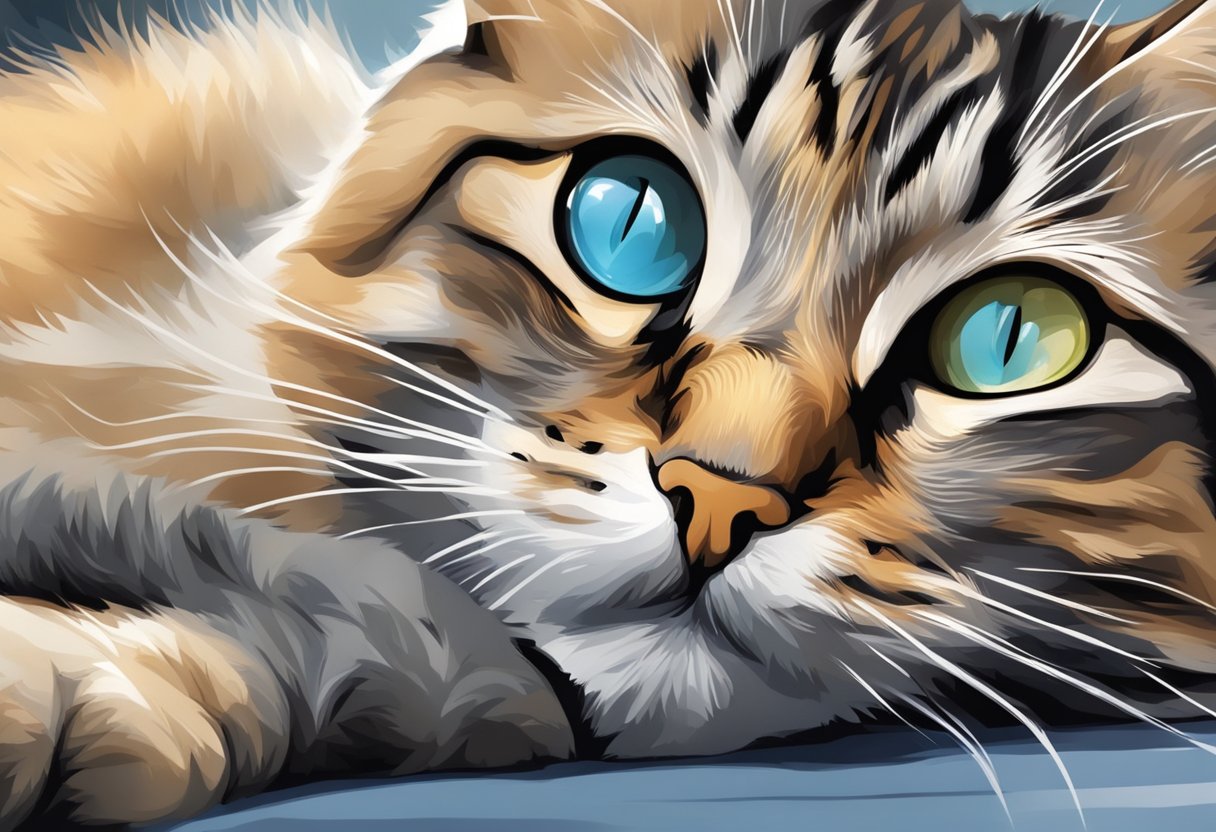
Understanding what is happening when a cat’s eyes roll back during sleep involves some knowledge of feline physiology and sleep cycles. Cats, much like humans, experience different stages of sleep, including the Rapid Eye Movement (REM) phase. During REM sleep, a cat’s eyes can move rapidly under their eyelids, and sometimes this can result in what looks like their eyes rolling back. This stage of sleep is crucial for cats, as it is for humans, for brain function and overall wellbeing. It may also be accompanied by twitching whiskers or paws, as cats are known to dream during this stage.
Key Takeaways
- Cats’ eyes may appear to roll back during sleep as a result of normal physiological processes.
- The REM phase of sleep in cats is critical for healthy brain function and can involve rapid eye movement.
- Observation of a cat’s sleep behaviors, including eye movements, is important for understanding their health and wellness.
Understanding Cat Sleep Patterns
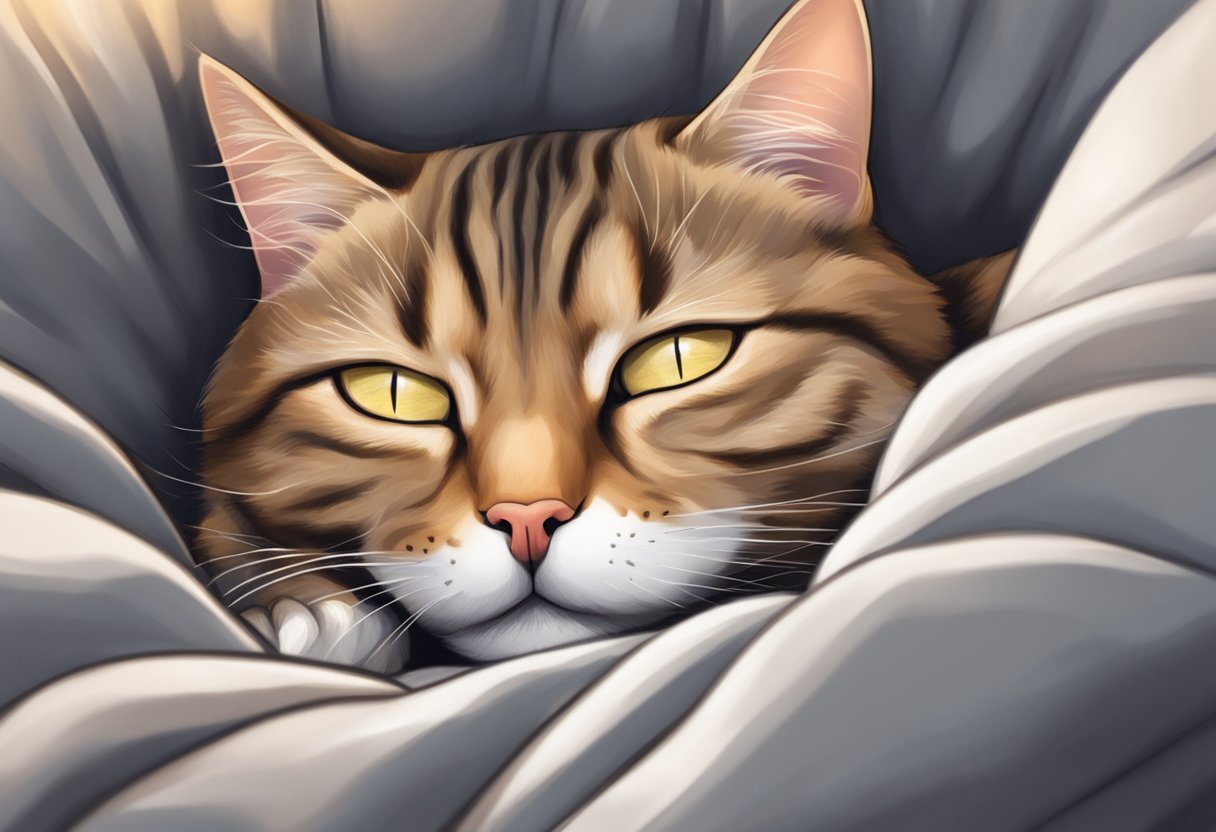
Cats experience complex sleep patterns that are essential for their well-being and survival instincts. These patterns consist of various stages that impact their behavior and physical state.
Differences Between NREM and REM Sleep
Non-rapid eye movement (NREM) sleep, or slow-wave sleep, is a period where cats experience deep relaxation. During NREM, a cat’s muscles loosen, their body temperature slightly decreases, and heart rate goes down. This is in contrast to rapid eye movement (REM) sleep, where brain activity increases and dreams are most likely to occur. REM is identifiable by the characteristic eye movements beneath the eyelids.
Duration and Quality of Cat Sleep
Cats sleep for an average of 13 to 18 hours a day, with kittens requiring even more. The quality of sleep is important, as it contributes to their health and wellness. A cat may alternate between light and deep sleep cycles, which allows them to rest thoroughly while remaining alert to potential threats.
The Role of Predators and Prey in Feline Sleep Habits
Feline sleep habits are deeply rooted in their history as both predators and prey animals. They are instinctively protective of their territory and can be vulnerable when asleep. Thus, even domesticated cats retain the need to stay alert to their environment, which influences their sleep patterns and positions.
Physical Behaviors During Sleep
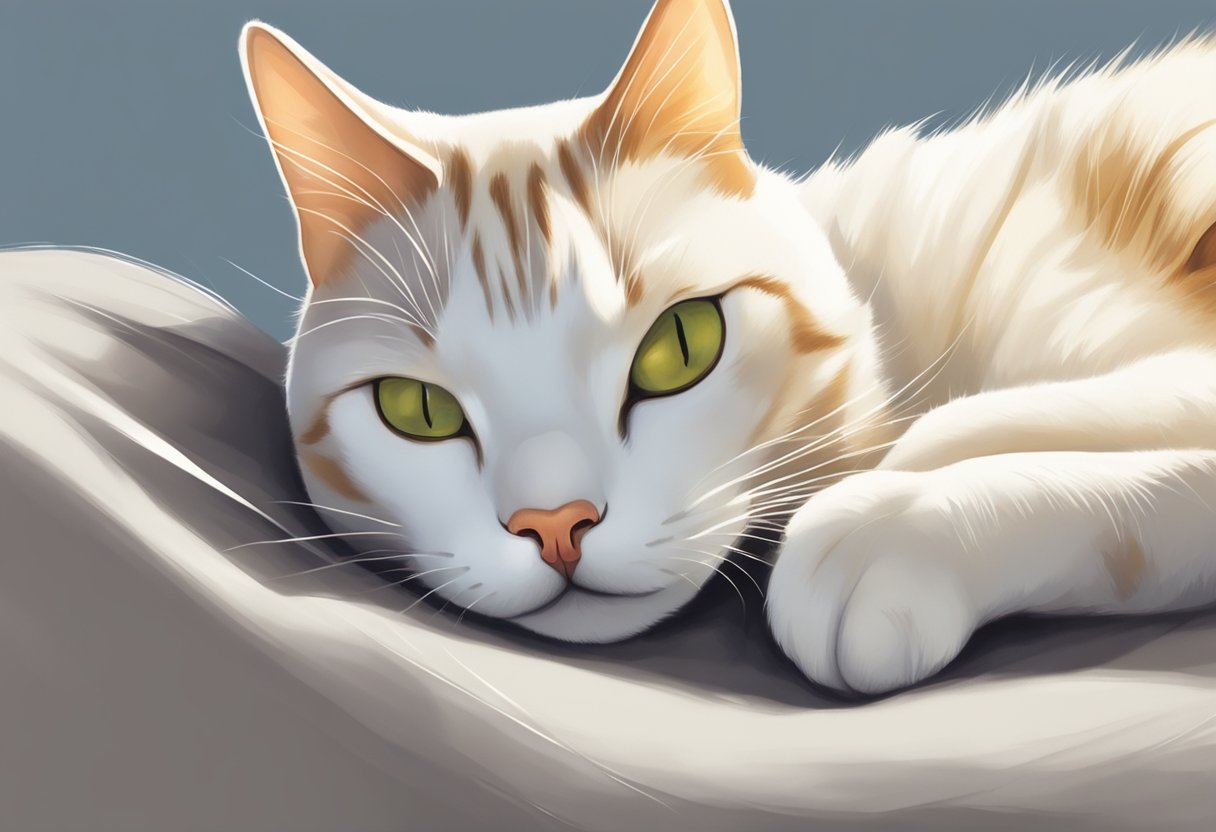
Cats exhibit unique physical behaviors during sleep that signify their comfort, trust, and instinctual alertness. Understanding these actions can provide insights into their health and emotional well-being.
Eyes Movement and Meaning
During the REM sleep phase, which is when dreaming occurs, cats may experience eyes rolling back. This is a normal phenomenon and helps distribute tears across the ocular surface, keeping the eyes moist. In some cases, a cat may sleep with their eyes partially open, which can be due to the relaxation of muscles in this sleep stage, and is usually not a cause for concern unless accompanied by signs of eye infections.
Positional Preferences and Safety
Cats often prefer sleeping in a curled up position, which conserves body heat and offers protection. However, they might also choose to sleep with legs stretched out when they feel secure in their environment. Their chosen sleeping positions not only reflect their need for warmth and security but also serve as indicators of their sense of safety and comfort.
Why Cats Sleep Next to You
When a cat chooses to sleep next to you, it’s often a sign of companionship and trust. Sharing body heat is an added benefit, but the primary reason is the bond they share with you. Through this action, they express their affection and comfort in your presence.
Whiskers and Alertness During Sleep
Even in sleep, cats remain somewhat alert to potential danger. Their whiskers, a key sensory tool, may twitch or move during sleep, indicating that they are still attuned to their surroundings. This state of alertness may be reduced when they feel secure, but their instincts remain active to ensure their safety.
Health and Wellness
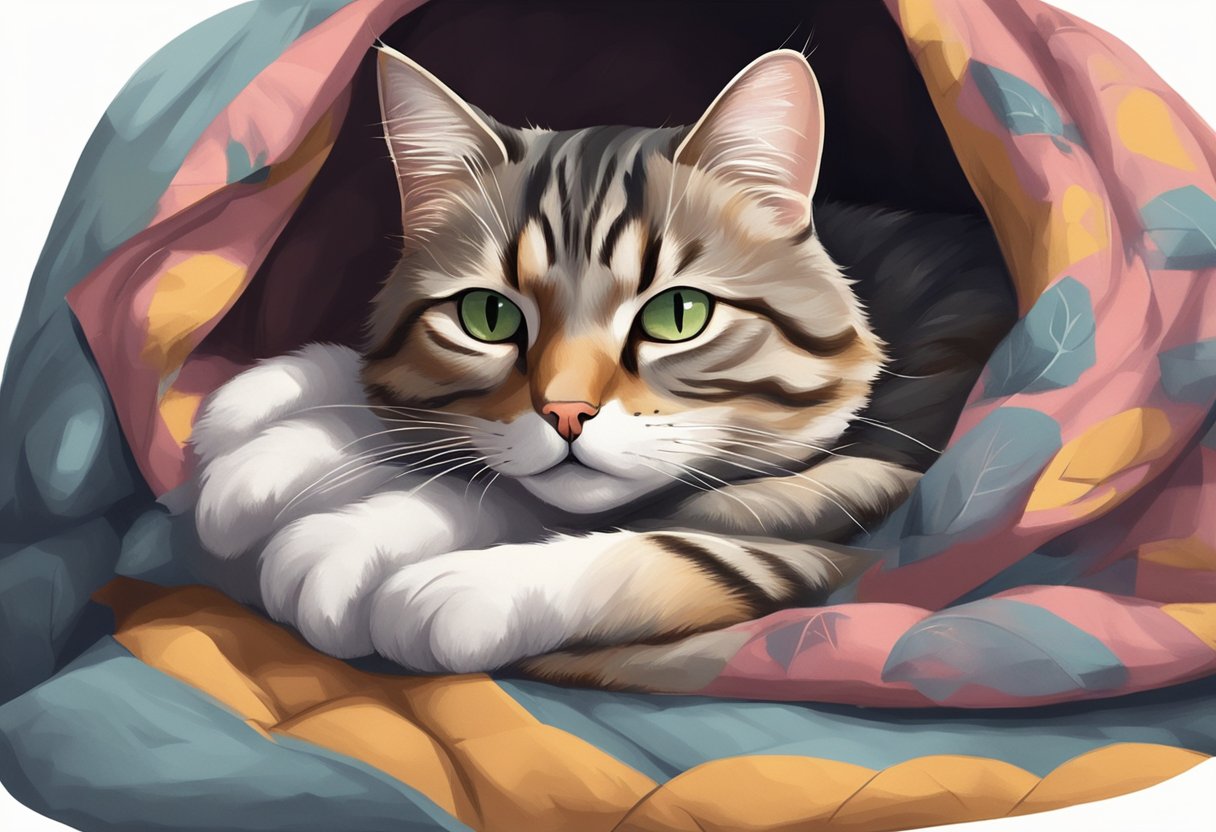
In the context of feline health, understanding the nuances of a cat’s sleep patterns is crucial for owners. It’s not only about the hours they snooze but also the physical signs that indicate healthy rest or potential health issues.
Evaluating Normal Sleep Behavior in Cats
During sleep, cats often exhibit what may seem like curious behaviors to their owners. It’s typical for a cat’s eyes to roll back slightly or even remain half-open while they are in the Rapid Eye Movement (REM) stage of sleep, which is perfectly normal and no cause for concern. To maintain their ocular health, this phenomenon may aid in eye lubrication as it enables the spread of tears across the eyes’ surface.
Identifying Abnormal Sleep Signs
Owners should be observant for signs that deviate from their cat’s usual sleep behavior. Symptoms such as excessive eye rolling, signs of eye discomfort, or eye infections may warrant a visit to the veterinarian. If the eyes rolling back is accompanied by other troubling signs like disorientation or imbalance, it might point to neurological conditions such as nystagmus. Prompt veterinary attention is recommended in such cases.
Benefits of Adequate Sleep for Cats
Adequate sleep contributes significantly to a cat’s overall health and wellness. It’s during sleep that cats can recover from the day’s activities and maintain their companionship abilities. Owners can ensure their cats receive undisturbed sleep by providing a calm environment, which in turn, fosters well-being and mitigates stress-induced health problems.
Frequently Asked Questions
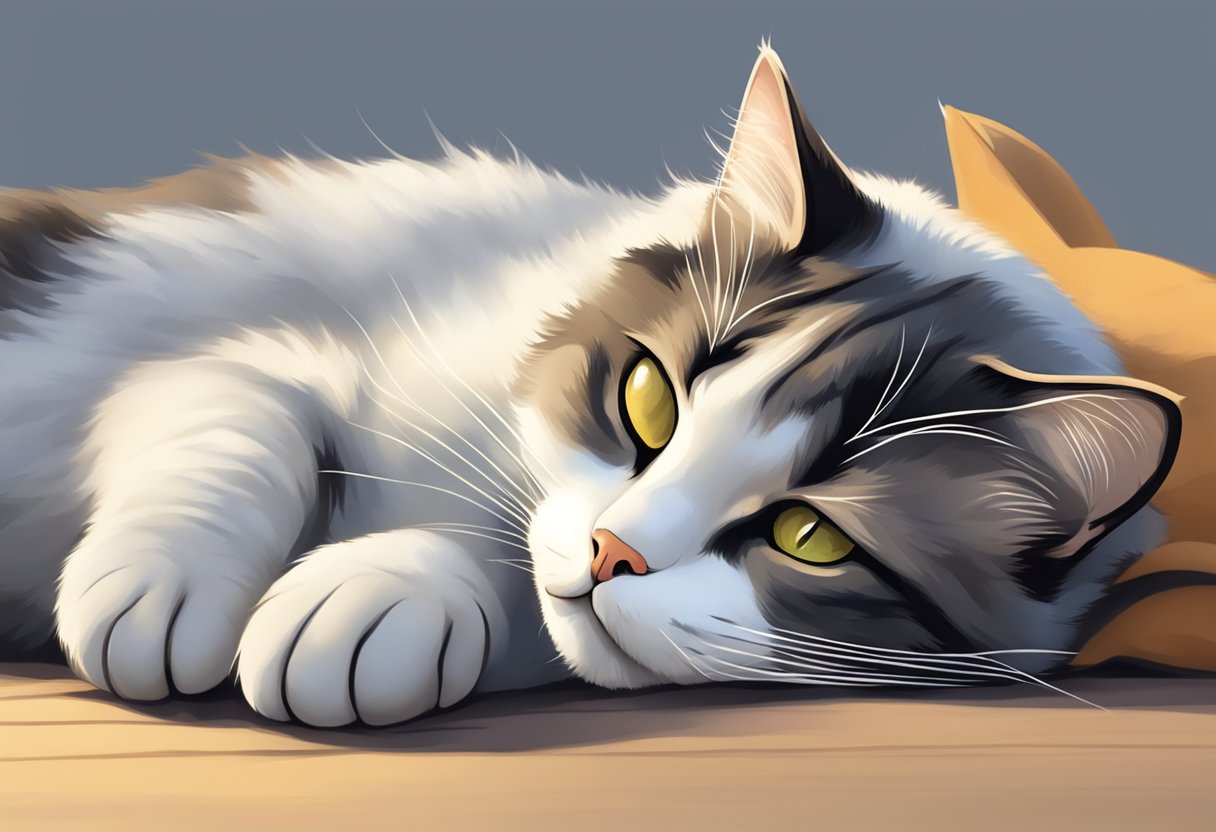
In understanding feline sleep behavior, it’s important to observe various physiological features, including a cat’s eyes. Here are some specific insights into the unique aspects of cat eyes during rest.
What is the function of the cat’s third eyelid?
The cat’s third eyelid, also known as the nictitating membrane, primarily serves to protect the eye. It acts as an additional layer that shields the eye from debris and provides lubrication.
Is it normal to see a white layer over my cat’s eyes during sleep?
Yes, it is normal to see a translucent third eyelid covering a cat’s eyes during sleep. This occurs because cats do not always close their eyelids fully, which can reveal the nictitating membrane.
Can the movement of a cat’s eyes during sleep indicate dreaming or other activities?
Cats, like humans, experience REM sleep, which is a stage of sleep where dreaming occurs. The movement of a cat’s eyes during this stage suggests they may be dreaming.
Why might a cat’s third eyelid be visible when they are awake?
A cat’s third eyelid may be visible when they are awake due to relaxation, but if it is persistently visible, it could be indicative of a health issue and warrants a veterinary visit.
Are there specific health issues indicated by a cat’s nictitating membrane showing?
A visible nictitating membrane can be a sign of conditions such as dehydration, infection, or neurological problems that affect a cat’s health.
How do a cat’s eyesight abilities, like reflection, work during nocturnal hours?
During nocturnal hours, a cat’s eyes utilize a layer called the tapetum lucidum, which enhances low-light vision by reflecting light that passes through the retina back into the eye, improving their ability to see in the dark.

